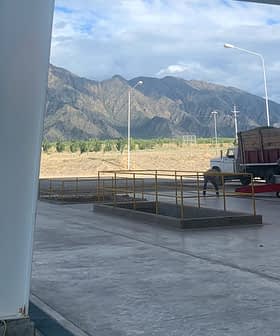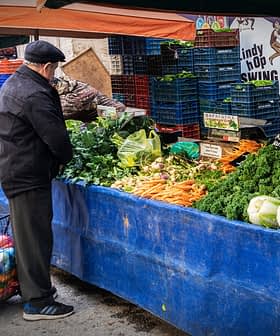Prayers for rain from olive growers across the Iberian peninsula have been left unanswered, and a recent report from the European Commission warned that hot and dry weather will pervade the region until November.
Composed of Spain and Portugal, the Iberian Peninsula has been responsible for about 46 percent of global olive oil production over the past half-decade.
However, both countries have grim forecasts, with Spain expecting its lowest yield since the 2014/15 crop year – roughly 1 million tons. Portugal also expects a significant decline in production compared to previous years, with about 100,000 tons of olive oil forecast for the 2022/23 crop year.
See Also:Europe Confronts Worst Drought in 500 Years, Officials SayFarmers in both countries have blamed the extremely hot and dry summer for the production decreases. The lack of rain has forced trees to conserve water, leading to the desiccation of olives or the trees not bearing any fruit.
According to the European Commission report, most of Portugal and parts of Spain received 50 percent less precipitation in July and the first half of August compared with the 1991 to 2021 long-term average.
This compounds the extremely dry winter and spring faced by both countries, with Portugal recording the second lowest amount of rainfall in a hydrological year since 1931 and parts of Spain experiencing the driest conditions in more than 1,000 years.
Long-term forecasts are no better on the Iberian Peninsula, with the European Commission predicting that higher temperatures and dry conditions persisting through November.
The lack of rainfall has forced farmers in Spain to rely solely on irrigation to water their crops. However, water levels in reservoirs explicitly used for this purpose are nearly 40 percent below design capacity, a level characterized as “exceptionally low” by the European Commission.
Furthermore, water levels in Andalusia, Castilla-La Mancha and Extremadura – the three largest olive oil-producing regions in Spain, respectively – sit at less than 30 percent capacity.
The situation is similarly severe in Portugal, where Environment Minister Duarte Cordeiro said 10 of the country’s 61 dams are in a critical situation, with stored water volume below 20 percent of capacity.
While officials are studying water restrictions for agriculture and the general public in both countries, seawater desalinization is being discussed as a long-term solution to the peninsula’s water woes.
In this department, Spain has a head start with 700 desalinization units in the country, and the government pledging €300 million to expand capacity.
Portugal only has one active plant and is investing €45 million to build another, potentially reaching 16 million cubic meters of potable water production in the coming years.
However, some engineers are skeptical that expanding desalination plants is a long-term solution. Desalination is an expensive and energy-intensive process. “An investment of this magnitude is not justified,” Sara Correi, an environmental campaigner, told local media.
Environmental campaigners in Spain have suggested that the south of the country may have to become less reliant on irrigated agriculture, which consumes 85 percent of all water resources.
“Unless we change the balance, we cannot improve the state of our rivers or adapt to climate change,” Julia Martinez, the executive director of scientific-technical activities at the New Water Culture Foundation, told the BBC.








